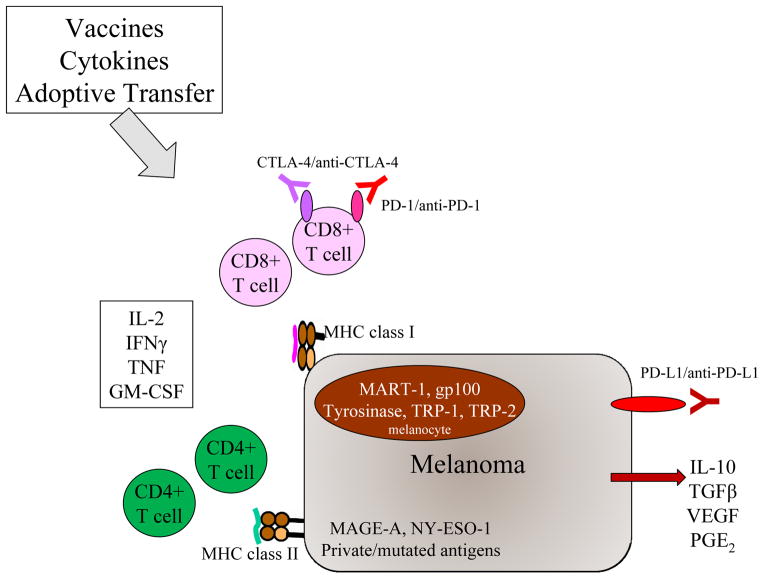Figure 2.
Overview of melanoma immunotherapy strategies and targets. Spontaneous immune surveillance and therapeutic interventions such as vaccines, adoptive transfer and cytokines can result in activation of CD8+ and CD4+ T cells. These T cells can recognize peptides derived from melanocyte differentiation antigens like MART-1, cancer/testes antigens like MAGE-A family members, or mutated antigens, presented in MHC class I and II. Activated T cells can produce “type 1” cytokines like IL-2 and IFNγ, which support antitumor effects: Melanoma tumors produce cytokines like IL-10 and TGFβ which inhibit immunity, and also upregulate PD-L1. Previously activated T cells upregulate CTLA-4 and PD-1, which can be blocked by specific antibodies to further promote antitumor effects.

